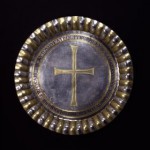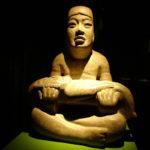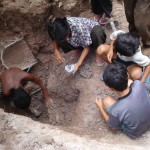S
This Encyclopedia constitutes a preliminary source of case studies that reveal aspects of the transnational illicit trade in cultural objects.
Each entry synthesizes information taken from what are considered to be reliable sources, and presents a bibliography of primary publications to facilitate further research. We endeavour to prepare texts that are factually accurate and objective accounts, and the texts are not indicative of an author’s personal opinion.
The Encyclopedia is a work in progress, and new entries will be added (and current entries updated as appropriate) as time permits. The authors endeavour to attribute any images that are used, but we should be contacted by the owners of unattributed images.

Dacian Gold Bracelets
Five hoards of solid gold bracelets looted from the site of Sarmizegetusa Regia, Romania, and partially recovered from the USA and other countries in Europe.

Dat-Hamin Stele
Stolen South Arabian stela returned to Yemen by Phoenix Ancient Art in 2004...

Everbeek Roman Silver Hoard
The third-century Roman silver hoard from Everbeek is one of the most high-profile archaeological finds of recent years in Flanders and it has contributed to the political debate surrounding amateur metal detection.

Grolier Codex
A Maya codex of questionable authenticity that appeared on the market in 1971.

Kumluca Silver
The Kumluca Silver is a collection of more than forty sixth-century AD Byzantine silver artefacts, thought to have been found close to the small town of Kumluca in southern Turkey, and bought by Dumbarton Oaks in 1963.

Las Limas Monument 1
Well-known Olmec greenstone statue stolen from a Mexican museum and abandoned in a Texas hotel room after traffickers were unable to sell it.

Salisbury Hoard
When a London antiquities dealer offered the British Museum rare Iron Age bronze miniature shields, it triggered the tracing of the origins of a unique and archaeologically significant, but illegally looted, hoard.

San Andrés de Machaca Church Looting
This remote Bolivian church has been robbed on several occasions; two paintings stolen from it were recovered in London in 2011.

Saqqara Royal Duck Vessels
Two stolen alabaster duck vessels returned to Egypt in 2008, one from Christie’s...

Satellite Imagery for the Investigation of Looted Archaeological Sites
High-resolution satellite imagery can offer a cheap and efficient means of monitoring the damage caused to archaeological sites by looting.

Sevso Treasure
In 1993 a large, unprovenanced silver ‘treasure’ of Roman date was subject to a court battle over ownership in New York.

Sipán
One of the best-known cases of archaeological looting; a Moche funerary site that was looted in 1987; the contents of an elite tomb were smuggled out of Peru and into various foreign collections.

Sipán Jewellery Offered for Sale at Sotheby’s (1994)
Several Peruvian antiquities offered for sale at Sotheby’s Auction House in 1994 that were seized by US Customs under suspicion of having been looted from Sipán.

Site Q (La Corona)
For years this site was only known from looted archaeological material for sale on the art market; its location was unknown. It has recently been identified in the Peten region of Guatemala.

Slack Farm
A Mississippi site in Kentucky where around 650 graves were looted over the course of two months in 1987.

South California Museum Raids (2008)
In January 2008, US federal agents raided the premises of two antiquities dealerships and four art museums in California on suspicion of dealing in and acquiring illegally-exported archaeological artefacts, and enabling a conspiracy to prepare false tax returns.

South Pole Exploration Artefacts Taken from Campsites of Robert Falcon Scott
Since the main Antarctic Treaty came into force in 1961, sites associated with the exploration of the continent have been protected. Items stolen from these sites have been subject to voluntary return.

State Hermitage Museum Thefts 2006
In July 2006, the audit of one of the many collection inventories of the State Hermitage Museum, St Petersburg, revealed that over 200 objects had been stolen, with an estimated total value of 130 million rubles ($5 million USD or £2.76 million GBP).

Stele of Adad-nerari III
Syrian stele offered for sale in Christie’s and Bonhams auction houses.

Subsistence Digging
The term ‘subsistence digger’ is used to refer to an individual who engages in the illicit excavation of archaeological sites for saleable cultural objects due to extreme poverty...

Surface investigation of looted archaeological sites
Regional surveys of archaeological landscapes offer a means of investigating and quantifying the damage caused by the looting of archaeological sites.

Swetnam, Drew, Kelly Smuggling Ring of Objects from Sipán
The following is one particularly well documented incidence of the trafficking of artefacts from Sipan.
